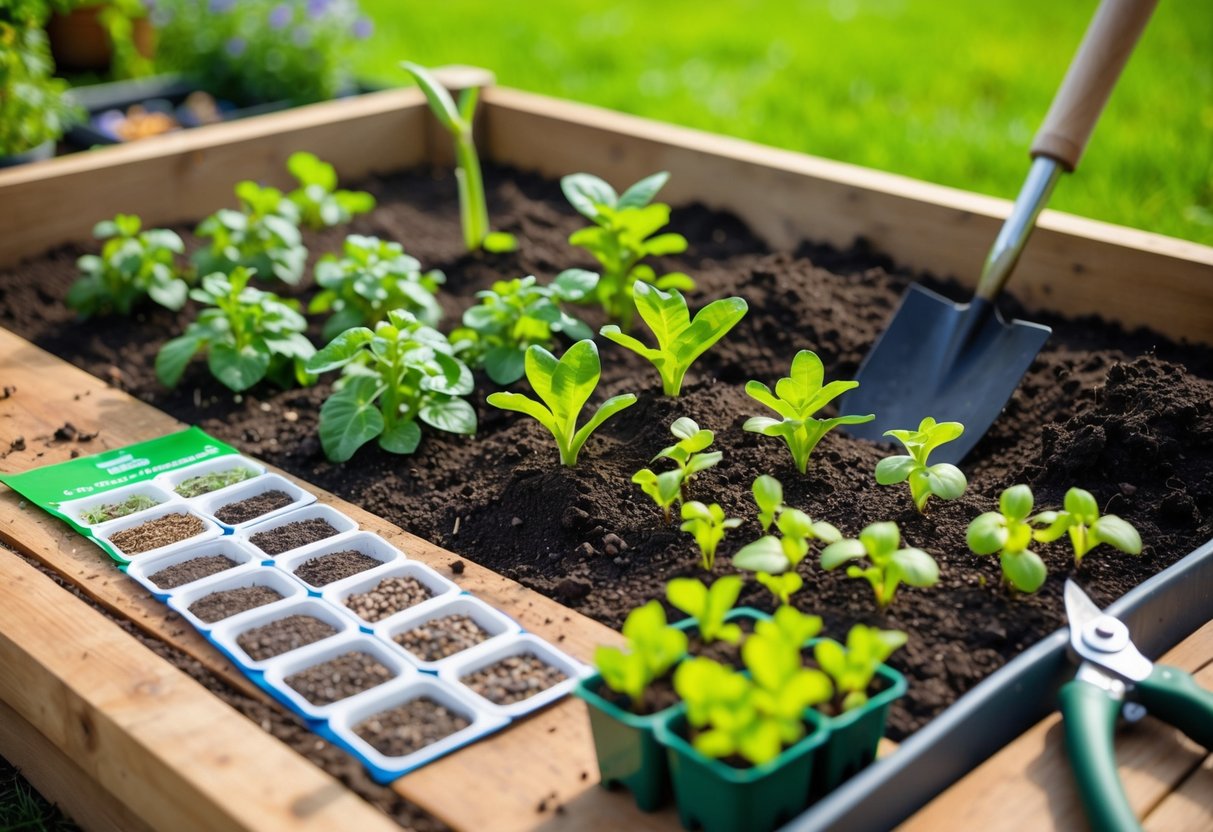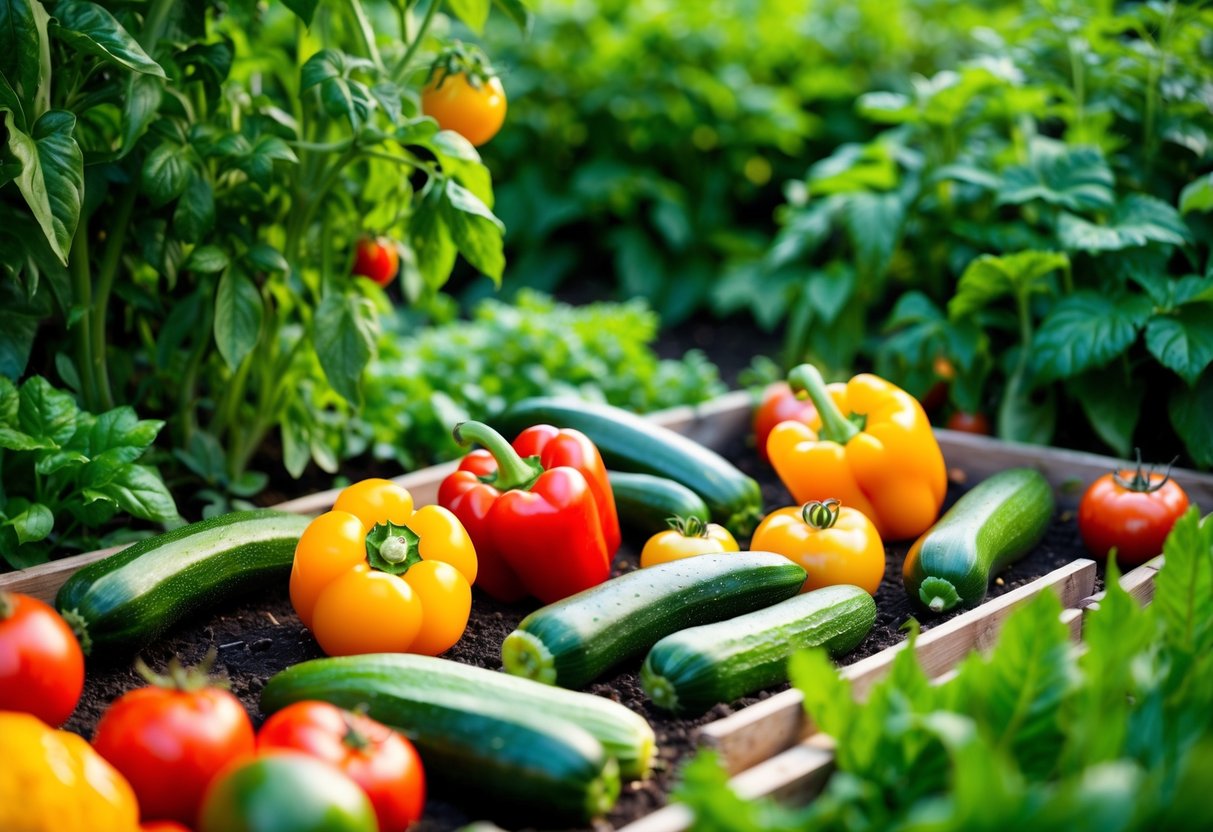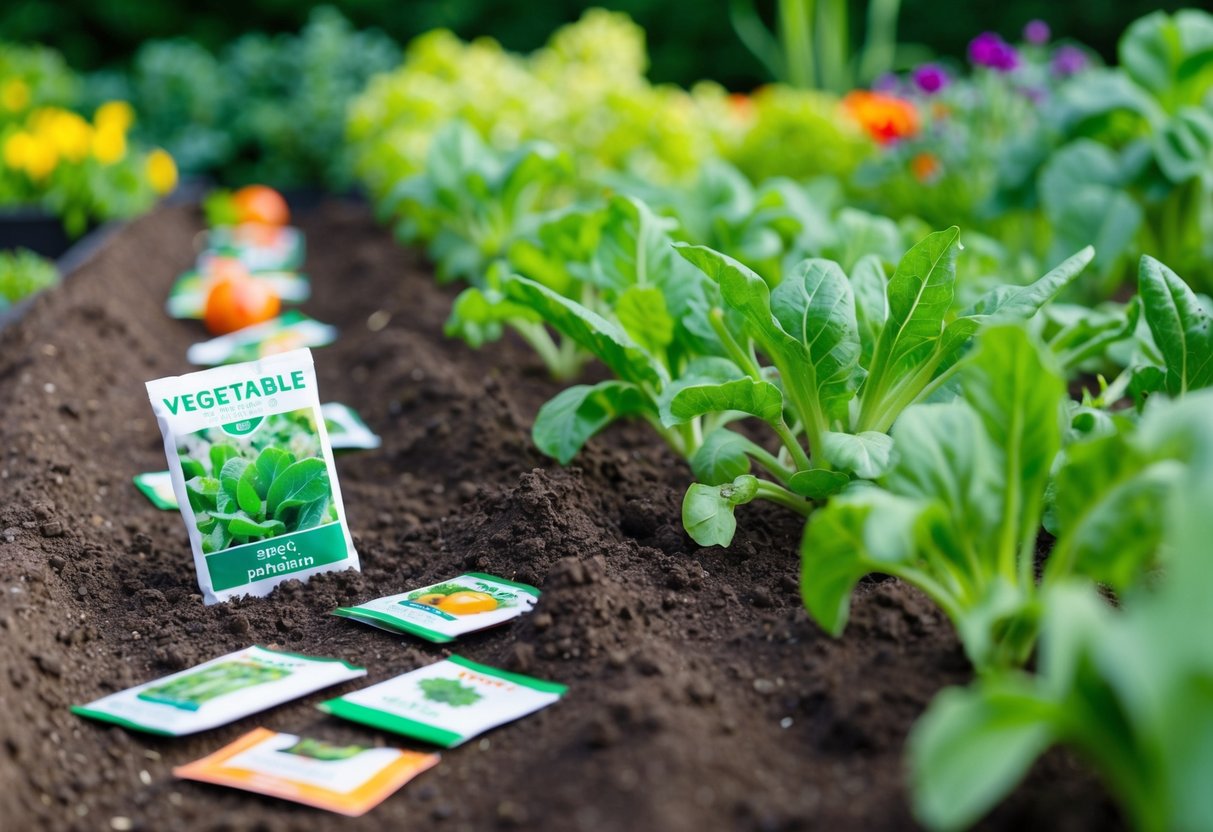What is the Best Thing to Plant Right Now? Top Seasonal Picks
As the seasons change, you might be wondering what you should be planting in your garden right now. This is a great time to get your hands dirty and start planning which crops to grow based on your location and climate.
For many areas, hardy vegetables like kale, spinach, and carrots are ideal choices for planting now as they can thrive in cooler temperatures. This ensures you have a fresh supply of these nutrient-rich greens as the days grow shorter.

Your planting choices will also depend on your hardiness zone. By knowing your specific zone, you can make informed decisions about what will grow best in your area.
In zones that experience mild winters, you might even consider planting onions or garlic. These crops are known for their resilience and can lay the foundation for a successful spring harvest. For detailed planting schedules according to your area, you might find this gardening calendar helpful.
In urban areas or smaller spaces, containers are a wonderful way to grow your garden. You can still enjoy a bountiful harvest with the right choices, like tomatoes and snappy green beans.
Container gardening allows you to be flexible and creative, making the most of the space you have while still enjoying the pleasure of growing your own food. Whether you’re an experienced gardener or just starting, there’s always something new and exciting to plant during this time of year.
Understanding Your Garden’s Climate

Knowing your garden’s climate is essential for choosing the best plants to grow. It involves understanding the hardiness zone and identifying the local frost date. Both are key to ensuring your plants thrive.
Hardiness Zone Considerations
The USDA Plant Hardiness Zone Map divides regions based on average minimum winter temperatures. It helps you determine which plants can survive in your area.
For example, if you live in Zone 10, temperatures range from 30°F to 40°F, which can support tropical plants. To find your zone, you can enter your zip code using the USDA gardening zone map.
Why is this important?
Plants suited for your zone are more likely to thrive and produce healthy crops. Knowing your zone helps prevent planting species that may struggle or die in your climate. It’s a simple step that can make a big difference in your gardening success.
Identifying Your Local Frost Date
The local frost date is crucial for planning your planting schedule. It marks the last expected spring frost and the first expected fall frost. Understanding these dates ensures you don’t plant too early or too late.
How can you find it?
You can check online resources or consult local gardening guides to find your specific frost dates. This information helps you time your planting, ensuring that your plants aren’t damaged by unexpected frosts, leading to healthier growth and better yield.
Avoid planting delicate seedlings before the last spring frost or leaving sensitive plants out past the first fall frost. Proper timing makes a significant difference in the success of your garden.
Selecting the Right Vegetables

Choosing the right vegetables can make your garden both productive and enjoyable. Focus on what grows best in your climate now, such as leafy greens, root vegetables, and easy-to-care-for perennials.
Leafy Greens to Grow
Leafy greens are great for adding quick and nutritious options to your meals. Lettuce, cabbage, and Swiss chard are perfect picks, even in smaller spaces.
Lettuce grows fast and can be harvested multiple times. Cabbage takes a bit longer, but it offers a hearty yield once mature. Swiss chard is versatile and can handle cooler temperatures. These greens are easy to manage and add fresh ingredients to your kitchen.
Root Vegetables Worth Planting
Root vegetables like onions, radishes, carrots, beets, and turnips are nutrient-rich choices for your garden.
Onions are a staple that can enhance various recipes. Radishes sprout quickly, providing a crunchy snack in no time. Carrots require patience, but their sweet flavor is worth the wait. Beets and turnips offer earthy tones and vital nutrients. These roots are reliable additions that thrive in many climates.
Perfect Time for Planting Perennials
Perennials offer long-term rewards in your garden, coming back year after year. Strawberries are an appealing choice, providing sweet treats for you and your family.
Once planted, they continue to produce with minimal upkeep. Perennials like herbs or certain flowering plants can also complement your veggies, attracting beneficial insects. These plants save you time in replanting each season, making gardening more pleasurable.
Starting with Seeds or Seedlings

When deciding whether to plant seeds or seedlings, consider the ease of care and growth benefits. Starting from seeds can be satisfying, while transplanting seedlings offers faster growth.
Seed Starting Basics
When beginning with seeds, it’s important to choose the right seed starting mix. This mix should be well-draining and light to help seeds germinate successfully.
Place the seeds in small pots or trays and keep the soil moist, similar to a damp sponge. Providing warmth and light will help the seeds sprout.
Indoor seed starting gives you the flexibility to plant in a controlled environment. You can have your seedlings ready to transplant as soon as the weather improves. Be sure to label your seeds so you can track what you’re growing. This method is ideal for gardeners who want to grow a variety of plants and save money.
The Benefits of Transplanting Seedlings
Transplanting seedlings can save you time and effort. Many people choose starter plants because they are already in the growing phase.
This means they have a head start and are often more competitive against weeds. Seedlings are stronger and less vulnerable to adverse weather conditions.
Using seedlings allows you to bypass the germination period, reducing the wait time for your plants to mature. It also decreases the chances of seed failure, ensuring nearly immediate benefits when you transplant them into your garden. While seedlings can be more expensive, they are a practical choice if you want to see results sooner.
Vegetable Care and Maintenance

Caring for your vegetable garden involves regular watering and feeding, as well as protecting your plants from pests and diseases. These essential steps help ensure a thriving garden with a bountiful harvest.
Watering and Feeding Your Vegetables
To keep your vegetables healthy, it’s important to focus on proper watering and feeding routines.
Different vegetables have varying water needs. For example, tomatoes and cucumbers typically require about 1-2 inches of water per week, making consistent watering key to their growth.
Mulching around your plants can help retain moisture. Use a layer of straw or compost to protect the soil from drying out.
Additionally, feeding your vegetables is crucial. Every few weeks, nourish them with a balanced fertilizer. This helps replenish nutrients in the soil, supporting growth and productivity.
Combatting Pests and Diseases
Keeping pests and diseases at bay is vital for maintaining a healthy garden.
Regularly inspect your plants for signs of common garden pests like aphids and caterpillars. Remove these unwanted guests by hand or use organic pest control methods. For example, introducing ladybugs can naturally reduce the aphid population.
Diseases such as blight and mildew can also affect your vegetables. Ensure proper air circulation around your plants to prevent fungal infections.
Consider using disease-resistant varieties when planning your gardening schedule. Rotating crops each season can minimize the risk of soil-borne diseases, providing a healthier environment for your vegetables to thrive.
Herbs and Aromatic Plants

When choosing what to plant right now, herbs and aromatic plants are fantastic options. They can enhance the flavor of your vegetables and offer a delightful scent to your garden.
Growing Herbs Alongside Vegetables
Growing herbs with vegetables can benefit both. For example, basil can improve the growth of tomatoes while also enhancing their flavor.
Parsley is another great companion plant. It attracts beneficial insects that help pollinate and protect vegetables.
Chives work well with carrots, boosting their growth and repelling pests. You can create a more aromatic environment by planting marjoram near basil. This herb has a sweet citrus aroma that complements basil’s scent and taste. To explore more about herbs like basil and marjoram, you might find useful advice here.
Perennial Herbs for Your Garden
If you want plants that come back each year, choose perennial herbs. An excellent example of a hardy perennial herb is rosemary. It offers a strong, fragrant aroma and is perfect for use in many dishes. This herb needs plenty of sunlight but requires little water.
Another perennial herb known for its rich flavor is oregano. It’s widely used in Mediterranean cooking and grows well in warm climates. These herbs can add both scent and taste to your garden. You can find oregano’s uses in more detail here.







